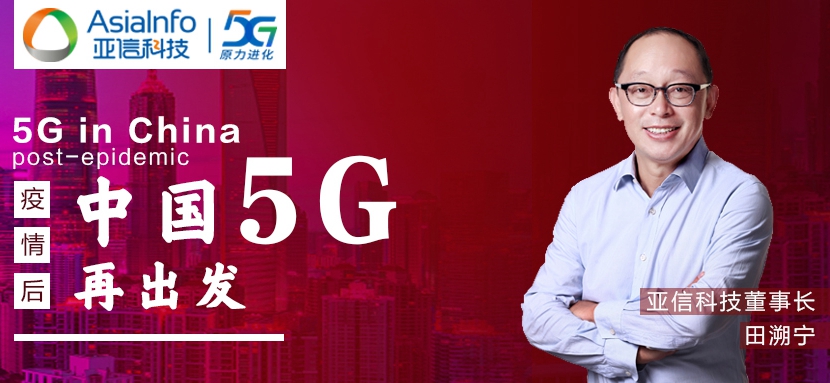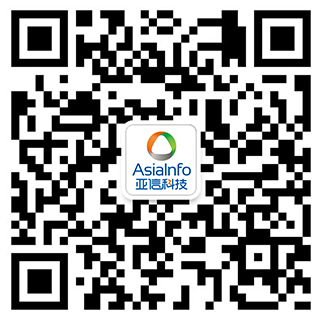The “GSMA China Week” online event was heldby the Global System for Mobile Communications Association (GSMA) on March 17. Tian Suning, Chairman of AsiaInfo (01675.HK), was invited to attend the meeting, andjointly interpreted the “restarting” of China’s 5G after the epidemic together with ZTE CEO Xu Ziyang and UNISOC CEO Chu Qing and Haier Group President Zhou Yunjie

The following is the compilation of Tian Suning’s speech
1. What did AsiaInfo contribute to the fight against the epidemic?
Tian Suning: As the most important partner and supporting force of telecommunications operators in China, we have worked with the operators since the first day after the outbreak of the epidemic to ensure the normal operation of the network, and also used a variety of big data means to follow the epidemic information and provide a reference for the decision-making by the government and all sectors of society to jointly cut off the spread of the epidemic. Recently, we have frequently received praise letters from customers, praising that we have accurately predicted the distribution of the epidemic through data analysis.
Now everyone needs to enter the mobile phone number to know how long he/she has been to Beijing before entering the building. Entrusted by the government, this public welfare application works based on the operators’ data and is supported by AsiaInfo’s team of big data experts. In addition, during the construction of Huoshenshan and Leishenshan hospitals in Wuhan, AsiaInfo Security immediately set up a network security expert group and donated products and equipment related to network security to assist the network security construction and ensure the information construction of the hospitals.
AsiaInfo has a team of nearly 700 people in Hubei and Wuhan, a large part of which supports the key online businesses of Hubei Telecom, Hubei Mobile, and Hubei Unicom. Our colleagues have always stood fast to the front line despite the difficulties in the epidemic area.
During the entire anti-epidemic process, none of our 15,000 employees were infected, and more importantly, we made our own contributions to fight the epidemic together with telecom operator customers.
2. What are new features and trends of 5G development after the epidemic?
Tian Suning: This epidemic is a great challenge for Chinese people and most companies. We have clearly seen that everyone recognizes the importance of online office and a more and more important role of information technology plays in this time. Online office, especially enterprise-level online office, requires more powerful network support. So I think this epidemic will greatly promote 5G applications and 5G construction.
Some people said that the prevention and control of the SARS promoted the development of B2C business, such as online shopping and online games. I think that this time of fighting the COVID-19 will advance the development of B2B companies of China on a large scale. With cloud video, cloud office and a variety of industry applications on the cloud becoming increasingly important, if we were hesitating about the application of 5G in the past, then now we have known that the network plays an irreplaceable role in the fighting the crisis after this epidemic. 5G has become a key infrastructure for such industry applications. It is also due to the vital function of the network that many industrial automation production lines have not been affected by the epidemic, or the capacity can be adjusted quickly in the fight against the epidemic.
The whole operation support system of AsiaInfo and our billing, CRM, BI, etc., are constantly moving into vertical industry application areas. Together with operators, we will work on industry-oriented slice billing, industry multi-vector billing, and AI and data-driven network optimization.
All these provide unprecedented opportunities as well as put forward more requirements for 5G applications, so I think that the development of 5G in China will continue to accelerate after the epidemic, and the digitalization, cloud trend, and online trend of the industry will develop more vigorously.
3. What are the opportunities and challenges for China's 5G development?
Tian Suning: I think there are two clear aspects for Chinese companies to seek opportunities.
The first is on using 5G network to create a new type of industry application. What the application combined by 5G and power, transportation, media and other industries will be, andthe bursting point of such combination has just begun. From a B2C perspective, China has created many world-leading applications. You can find innovations by Chinese companies no matter in online payments or online games, or even in the advertisements in elevators. 5G’s innovation in the B2B field has just sprouted, and China’s innovation will continue to emerge in B2B applications. We are gradually moving towards an era of enterprise digitalization where enterprises are transforming from information to digitalization and then from digitalization to intelligence. Such a development process kicks off the revolution of historical significance for the entire human race from the industrial revolution to the digital and intelligent revolution.
Furthermore, in the 5G era, “cloud” and “network” will gradually combine together and move toward “cloud-network integration”. The most important means to implement technology is the network developing towards virtualization, cloud, and software-defined networks, during which a large number of companies with core technologies are needed. At present, as relevant technological innovations are constantly developing, the cloud trend has moved to containerization, then how can we ensure the timeliness, security, and high reliability in the process of large-scale containerization? This isunprecedented for technological innovation in the industryand the prosperity of the innovation ecosystem.
Thinking from the perspective of challenges, most Chinese enterprises were mainly application-oriented in the past, and many of their technologies were obtained from others. In the future, however, we will need a large number of core technological innovations for building a prosperous 5G ecosystem and building a strong virtualized and highly reliable network. In the past, the innovation in the IT field mainly relied on Silicon Valley. But I believe that with the development and application of 5G in China, there should be two drivers in global innovation in the future. The combination of innovation of Silicon Valley and innovation of China will enrich the global technological innovation.
In the process of combining IT, CT and OT, I believe that the next generation of entrepreneurs in China will create core technologies that are mainly developed in China and have global influence in the future. In the past 30 years, we have benefited from global technological innovation. In the next 30 years, we will contribute China’s innovation to the global informatization and digitalization process.




